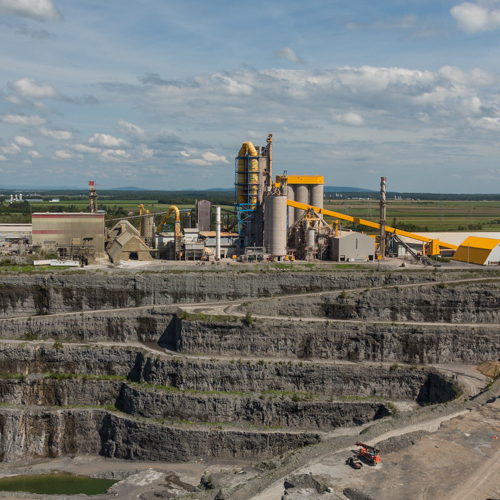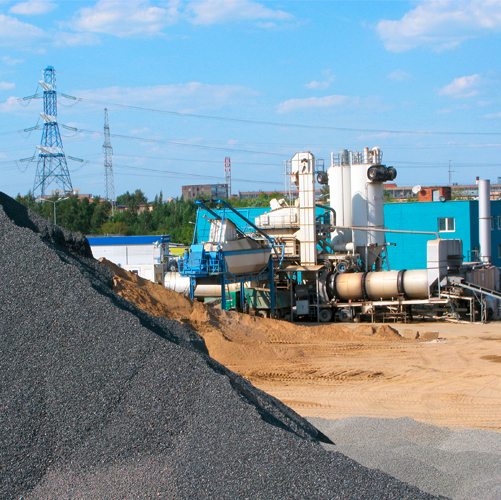Dual energy and the Demand Response (DR) Option are two particularly promising programs for businesses and property managers who want to optimize energy consumption and reduce their GHG emissions without influencing demand on the power system. In this article, we provide an overview of each solution’s characteristics and how they compare in practice.
Dual energy 101
Énergir and Hydro-Québec have teamed up to offer dual energy1, a solution that consists of replacing a heating system that uses only natural gas with one that uses electricity most of the time. Natural gas takes over during periods of cold weather (when the outside temperature drops below -12 °C or -15 °C, depending on the area), when electricity demand on the Hydro-Québec grid is very high. This makes it possible to use the right energy at the right time and at the best cost, so you can heat your buildings more efficiently and reduce greenhouse gas emissions.
The DR Option at a glance
Hydro-Québec’s Demand Response (DR) Option, enables customers to reduce power demand of their buildings or processes during periods of very high demand (“peak demand events”) to diminish strain on the grid. To do this, customers can reduce their electricity demand during peak demand events or use a backup energy source (a generator or thermal storage unit, for example), or shift their production or work schedules to other times of the day. At the end of the winter period, customers receive a credit based on the effective interruptible power, i.e., the average power reduction during all peak demand events.
The differences
While these two solutions help reduce demand on the electrical grid during periods of extreme cold, they differ in several ways, starting with the fact that the DR Option is voluntary. In other words, customers are under no obligation to reduce their power demand when Hydro-Québec encourages them to do so. Dual energy, on the other hand, involves installing a device that automatically switches from one energy source to another depending on the outside temperature, as well as installing an electric meter for heating loads. This guarantees power shedding, which improves both the benefits for the customer and the impact on Hydro-Québec’s electrical grid. In fact, in an equivalent building, an electric heating system sized for dual energy (up to the switchover temperature of -12 °C or -15 °C) is much less of a drain on the electrical grid than a system sized for all-electric mode for the same building, which requires sufficient capacity for the coldest winter temperatures despite using the DR Option. Opting for dual energy therefore makes it possible to better allocate the power available on the grid.
Dual energy and the DR Option have other distinct characteristics and benefits summarized in the table below.
| CI dual energy | Peak demand management | |
| Monetary incentives |
|
|
| Target clientele |
|
|
| Eligibility |
|
|
| Pros |
|
|
| Cons |
|
|
| Metering and compatibility of both programs |
|
|
Contrasting results
Now let’s look at how dual energy and the DR Option compare practically using two real-life scenarios.
Scenario 1: Fictitious building heating consumption of 91,000 m3 of natural gas per year
Scenario 1A: A customer decides to install a 400 kW electric boiler that enables them to fully meet their building’s heating needs, reducing their natural gas consumption by about 91,000 m3 annually. In order to limit their impact on peak demand, they subscribe to the DR Option so they can receive a credit on their annual electricity bill in exchange for power shedding during peak demand periods. During these periods, the building’s heating load shifts onto its existing natural gas boilers in order to minimize electric power demand.
Scenario 1B: In the same building, the customer installs a dual-energy electric boiler. Since dual energy uses two energy sources (electricity and natural gas at -12 °C and below), electrical power requirements are lower, so that a 270 kW (-130 kW) boiler is sufficient.
Scenario 1C: the customer installs the same 270 kW boiler in dual-energy mode (as in Scenario 1B), but opts for 100% renewable natural gas (RNG) instead of fossil natural gas when the gas boiler takes over from the electric boiler.
| Gas baseline | Option 1A: Electricity with DR Option |
Option 1B: Dual energy |
Option 1C: Dual energy + RNG |
|
| Total annual bill ($)*,**,***,**** | $45,940 | $77,820 | $50,564 | $58,397 |
| Unit energy cost ($/GJ) | 13.32 | 27.68 | 17.94 | 20.72 |
| Maximum power demand (kW) | 0 | 399 | 270 | 270 |
| GHG reduction (tonnes CO2 e)† | 0 | 171.7 | 143.8 | 174.6 |
* The annual electricity bill is $102,388, and the DR Option credit is $25,673
** Effective interruptible power: 375 kW
*** Electricity rate effective April 1, 2023
**** Natural gas rate ($/m3): Molecule: 0.15, Transmission: 0.03212, Load balancing: 0.04189, CATS: 0.09128, Distribution: June 2023
† Ibid., 3
Of all the solutions for reducing peak demand, we can see that the dual-energy option is the most economical in terms of energy costs and that the dual energy + RNG option delivers GHG emission reductions equivalent to the electric option with the DR Option, but at a significantly lower cost (-$19,423 over one year3).
Scenario 2: Comparison between two buildings with the same electrical power demand
In the second scenario, we project the energy performance of both options on two fictitious buildings. Both have electric boilers of equal capacity and as well as a natural gas-fired boiler used during peak demand periods. For a total heating capacity of 400 kW, a building 100% heated with electricity and participating in the DR Option will save only about 90,000 m3 of gas annually. If the same customer installs a 400 kW electric boiler in another building, but in dual-energy mode, they will be able to reduce natural gas consumption by 135,000 m3. As shown in the table below, dual energy can significantly improve the environmental performance of the customer’s buildings compared to complete conversion to electricity (+ 41 tonnes of GHGs avoided) since more natural gas is replaced. In summary, for the same demand on the power system, GHG emissions are reduced 24% more with dual energy than with the DR Option4.
| All-electric building with DR Option | Dual-energy building | |
| Baseline heating consumption of gas (m3) | 91,000 | 135,000 |
| Unit energy cost ($/GJ) | 27.68 | 17.78 |
| Maximum power demand (kW) | 400 | 400 |
| Natural gas savings (m3) | 89,578†† | 110,957 |
| GHG reduction (tonnes de CO2 e) | 171.7 | 212.7 |
†† Residual natural gas consumption is due to the operation of natural gas boilers during DR Option events.
This comparison shows that the dual-energy scenario results in greater absolute savings in natural gas consumption than that of the all-electric scenario for the same allocation of electricity from the Hydro-Québec grid. This is because the number of hours spent below -12 °C annually is very low and the shift from natural gas consumption to electricity is significant. In fact, the 400-kW power demand allocated to the dual-energy building is greater than that allocated to a 100% electric building. As a result, it replaces more natural gas consumption in dual-energy mode. From a societal perspective, this power block is therefore used more wisely when used in a dual-energy building than in a fully electrified building.
In conclusion
These two scenarios clearly show that, for the same power demand—and therefore an equivalent impact on the electrical grid—dual energy eliminates more GHG emissions than the DR Option.5 What’s more, for the same building, dual energy also delivers a bigger reduction in operating costs through the use of natural gas (or even RNG) in periods of extreme cold. Although it requires a higher initial investment (that can be partly offset by grants covering up to 80% of the extra costs), dual energy provides recurring savings. This makes it a sustainable solution for commercial and institutional customers looking for an effective solution for decarbonizing their buildings.
Pierre-Olivier Nadeau
Senior Advisor, Energy expertise
DATECH Group
1 For the purposes of comparing the two solutions, the offer presented in this article is the commercial and institutional (CI) dual-energy offer.
2 ÉcoPerformance Program
3 Based on the emission factor attributed to biomethane for methane and nitrous oxide emissions in Protocol QC.30 of the Regulation respecting mandatory reporting of certain emissions of contaminants into the atmosphere (RRMRCECA, R.S.Q., Q-2, r.15) compared to the emission factor attributed to electricity in Quebec under Protocol QC.17 in RRMRCECA. Biogenic CO2 emissions (the term biogenic refers to what is produced by living organisms and therefore to the short carbon cycle as opposed to the long cycle that generated fossil fuels) during biomethane combustion are not included in this factor. Biogenic CO2 emissions are not included in the government’s climate change targets. Factors used in this bulletin are for illustrative purposes only. An emitter subject to the Regulation respecting mandatory reporting of certain emissions of contaminants into the atmosphere (RRMRCECA) must follow the RRMRCECA protocol(s) applicable to its operations.
Biogenic CO2 emissions from the combustion or use of biomass and biofuels must be reported, but do not have to be verified and do not have to be covered under the Regulation respecting a cap-and-trade system for greenhouse gas emission allowances.
4 Ibid., 1
5 Ibid., 1
Continue reading








